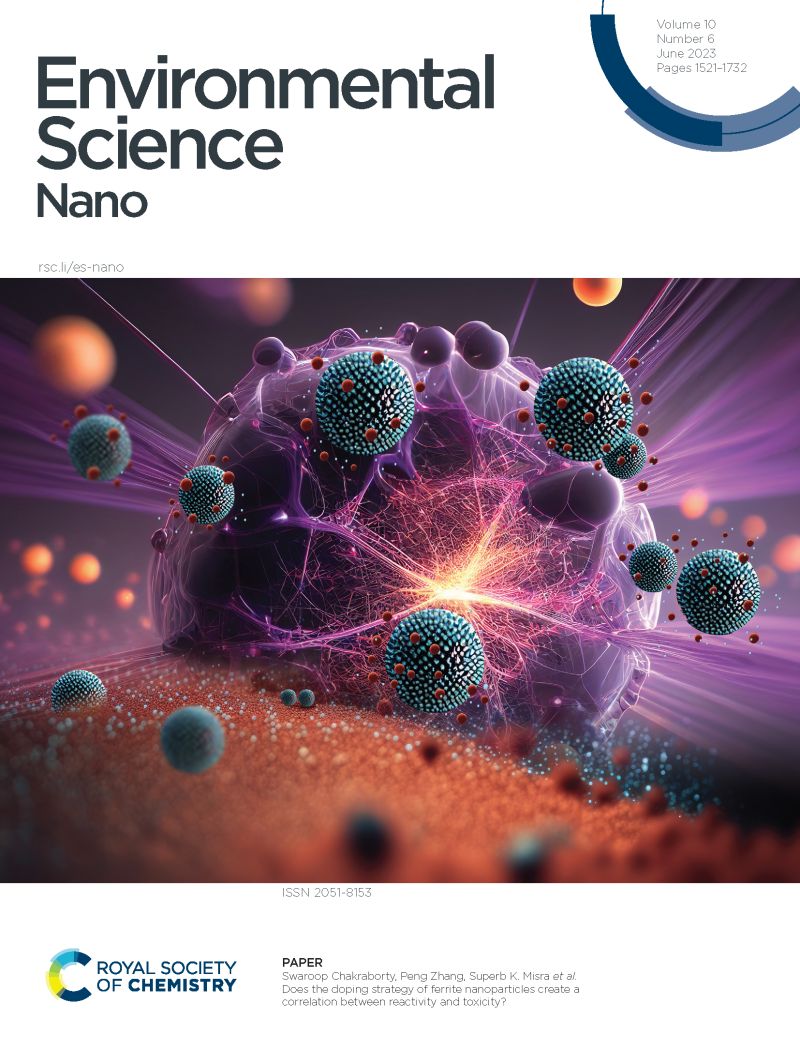自然总是安全的吗?有效的植物纳米杀蚜剂可能对传粉昆虫有害
IF 5.1
2区 环境科学与生态学
Q1 CHEMISTRY, MULTIDISCIPLINARY
引用次数: 0
摘要
在传统农药的创新和环保解决方案中,纳米输送系统(即纳米结构和纳米乳液)似乎是植物制剂用作杀虫剂的理想候选者。在此背景下,本研究首先制备了葱精油纳米乳液,并对其对棉蚜的毒理学活性进行了评价。此外,还研究了纳米制剂对蜜蜂和植物的不良影响。大蒜EO的化学成分表明EO仅由硫化合物组成(占总面积的95.35%)。采用高压微流化(HPM)技术获得纳米配方(15% EO, 5% Tween®80,80%水w/w/v),并通过动态光散射(DLS)进行物理表征。结果表明,该材料具有最佳的物理性能,粒径在纳米级(179±1.4 nm),并且具有良好的多分散性指数(PDI),储存1个月后PDI低于0.25。对目标害虫的毒理学生物测定显示,72 h后的残留接触毒性(LD30为0.810,LD50为1.079,LD90为2.171%)和外用致死剂量(LD30为0.133,LD50为0.212,LD90为0.667%)均具有较高的杀虫活性。虽然检测到对甜椒植物的毒性作用可以忽略不计,但通过摄入应用,所开发的EO纳米乳液显示出对蜜蜂的高毒性。综上所述,本研究证明了所研制的纳米生物农药对目标害虫具有较高的药效;然而,要充分了解这些新型纳米杀虫剂对农业生态系统中非目标生物的影响,还需要进一步的研究。本文章由计算机程序翻译,如有差异,请以英文原文为准。
Is natural always safe? Effective botanical nano-aphicide can be harmful for pollinators
Among the innovative and eco-friendly solutions to conventional pesticides, nano delivery systems (i.e., nanostructures and nano-emulsions) seem to be the ideal candidates for botanical formulations to be used as insecticides. In this context, the proposed study firstly aimed to formulate an Allium sativum EO-based nano-emulsion and to evaluate its toxicological activity against Aphis gossypii. Furthermore, the adverse effects of nano-formulation on honeybees and plants were also investigated. The chemical composition of garlic EO highlighted that EO was composed only of sulfur compounds (95.35% of the total area). The nano-formulation (15% EO; 5% Tween® 80; 80% water w/w/v) was obtained using high-pressure microfluidization (HPM) techniques and physically characterized by Dynamic Light Scattering (DLS). The results highlighted optimal physical properties with particle sizes ranging in the nanoscale (179±1.4 nm) and good polydispersity index (PDI), with values inferior to 0.25 after 1 month of storage. The toxicological bioassays against the target pest showed high insecticidal activity with low estimated lethal doses in both residual contact toxicity (LD30 of 0.810, LD50 of 1.079, and LD90 of 2.171% of EO) and topical application (LD30 of 0.133, LD50 of 0.212, and LD90 of 0.667% of EO) after 72 h exposure. While negligible phytotoxic effects on sweet pepper plants were detected, the developed EO nano-emulsion revealed high toxicity towards honeybees through ingestion application. Overall, this study proved the high efficacy of developed nano-biopesticide against the target pest; however, further studies are needed to fully understand the impact of these new nano-insecticides on non-target organisms in the agroecosystems.
求助全文
通过发布文献求助,成功后即可免费获取论文全文。
去求助
来源期刊

Environmental Science: Nano
CHEMISTRY, MULTIDISCIPLINARY-ENVIRONMENTAL SCIENCES
CiteScore
12.20
自引率
5.50%
发文量
290
审稿时长
2.1 months
期刊介绍:
Environmental Science: Nano serves as a comprehensive and high-impact peer-reviewed source of information on the design and demonstration of engineered nanomaterials for environment-based applications. It also covers the interactions between engineered, natural, and incidental nanomaterials with biological and environmental systems. This scope includes, but is not limited to, the following topic areas:
Novel nanomaterial-based applications for water, air, soil, food, and energy sustainability
Nanomaterial interactions with biological systems and nanotoxicology
Environmental fate, reactivity, and transformations of nanoscale materials
Nanoscale processes in the environment
Sustainable nanotechnology including rational nanomaterial design, life cycle assessment, risk/benefit analysis
 求助内容:
求助内容: 应助结果提醒方式:
应助结果提醒方式:


